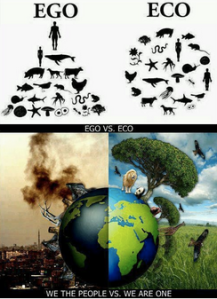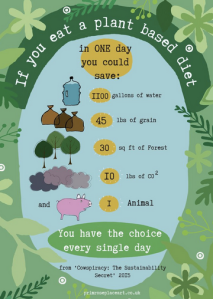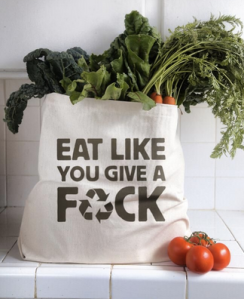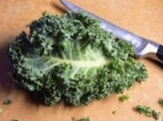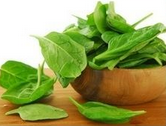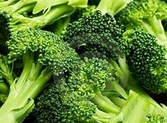I recently wa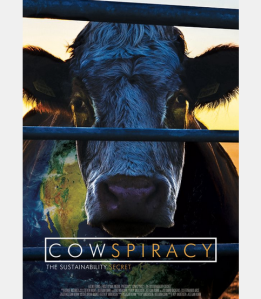 tched CowSpiracy: The Sustainability Secret on Netflix and was blown away by the information, statistics and images displayed in this 90 minute documentary about the global agriculture business. The movie is well-researched, shocking, terrifying, and convincing. I immediately switched to a primarily vegan diet (I drink lactose free milk with my coffee or eat the occasional egg or salmon steak). While environmentalists in the movie argue that eating a vegan diet one out of seven days during the week is not sufficient, I have decided to make a conscious effort to include more vegan recipes in my diet through out the week. After my first week I found veganism to be delicious, satisfying, and diverse. I will say that some vegan products are definitely more expensive (such as vegan cheese and breads), but by comparison vegan meet substitutes are delicious and affordable. I was also worried about the amount of soy content that I would encounterby switching to a non-dairy / vegetarian diet (because of GMO soy products), but a lot of vegan products are actually both soy and gluten-free.
tched CowSpiracy: The Sustainability Secret on Netflix and was blown away by the information, statistics and images displayed in this 90 minute documentary about the global agriculture business. The movie is well-researched, shocking, terrifying, and convincing. I immediately switched to a primarily vegan diet (I drink lactose free milk with my coffee or eat the occasional egg or salmon steak). While environmentalists in the movie argue that eating a vegan diet one out of seven days during the week is not sufficient, I have decided to make a conscious effort to include more vegan recipes in my diet through out the week. After my first week I found veganism to be delicious, satisfying, and diverse. I will say that some vegan products are definitely more expensive (such as vegan cheese and breads), but by comparison vegan meet substitutes are delicious and affordable. I was also worried about the amount of soy content that I would encounterby switching to a non-dairy / vegetarian diet (because of GMO soy products), but a lot of vegan products are actually both soy and gluten-free.
So what is meatless Monday, where did it start, and why should you join the movement.
Meatless Monday is an international campaign that encourages people not to eat meat on Mondays to improve their health and the health of the planet. Large companies such as Whole Foods, stars like Oprah Winfrey, colleges, restaurants, magazines, and workplaces have also joined the campaign and use social media to bring awareness to the cause. The Cowspiracy Facebook page has over 70,000 likes, with many people declaring an instant conversion to veganism. Meatless Monday was founded in 2003 by Sid Lemer as part of the Healthy Monday initiative in America, which encourages Americans to make healthier decisions at the start of each week. Strategically meatless Monday falls right after the weekend when unhealthy habits prevail and can be forgotten and replaced by positive choices at the beginning of a new workweek.
But those aren’t the reasons for why you should start incorporating meatless Monday to your weekly routine. I encourage everyone to start this lifestyle habit for your personal health and the overall health of the planet. According to a study by the American Journal of Preventative Medicine, 60% of participants showed improvements in their overall health and physical activity levels by switching to a meatless Monday routine. Participants reported feeling more energized, having mental clarity, being more motivated to commit to other healthy habits during the week, and enjoyed being part of the social media movement across the globe. According to meatlessmonday.com here are some other long-term health benefits:
- Reduce risk of heart disease and stroke:
Heart disease is one of the leading causes of death in American. By reducing the amount of meat intake each week one study found that swit
ching to a more plant based diet reduces the risk of coronary heart disease by 4% and reduces the risk of stroke by 5%.
- Reduce the risk of cancer:
There is convincing evidence that red meat and processed meat consumption increases the risk of colorectal cancer. There is also evidence that red meat increases the risk of esophagus, lung, pancreas, endometrium, and prostate cancer. In contrast, a plant-based diet decreases the risk of several types of cancers, including mouth, larynx, esophagus, and stomach cancer.
- Fight Diabetes and Curb Obesity:
Research suggests that plant-based diets can reduce the risk of type 2 Diabetes, often associated with people who are significantly overweight. Eating a plant-based diet can decrease total calorie consumption, which helps maintain a healthy weight. Studies conducted in Europe and the United States have found that plant-based and vegetarian diets are associated with lower body weight and body mass index (BMI). Plant based fiber also helps with feeling full, resulting in a lower calorie intake.
In addition to health benefits, there are also environmental benefits with reducing the intake of animal food. According to a “cradle-to-grave” study of several different dietary patterns, researchers found that a vegan diet had the smallest environmental impact, and that a conventional meat diet had the greatest environmental impact. Similar statistics were discussed in the movie CowSpiracy. According to the movie the cattle business requires so much water and fossil fuel to convert plants into cow feed that by switching to just one vegan meal you can:
- Save 3000 gallons of water per day. In order to make 1 hamburger, 660 gallons of water are used and 1000 gallons of water are required to produce one gallon of milk. That is the equivalent of showering for two months. 55% of earth’s water supply is used for animal culture versus 5% for domestic home consumption.
- Reduce the amount of methane released into the atmosphere by 900,000 tons, the environmental equivalent of taking 3.7 million cars off the road for a year. 51% of global greenhouse gas emissions are to due livestock and their byproducts compared to 13% due to transport including road, air, rail, and marine combined.
- Reduce the rate of specie extinction. 110 animal and insect species are lost everyday from rainforest destruction. 91% of animal agriculture is responsible for Amazon destruction. Animal agriculture is the leading cause of specie extinction, ocean dead zones, water pollution, and habitat destruction.
The industry that is most responsible for global warming, water scarcity, species extinction, habitat loss, deforestation, and marine pollution causing “dead zones” is the animal agriculture industry. Throughout the movie producer Kip Anderson sets out to investigate why environmental advocacy organizations and nonprofits talking about this issue and working towards a more sustainable solution? The sad truth that he discovers is that those who profit from the cattle agro. business are able to outspend, out-lawyer, and out-proaganda everyone in those organizations who should be addressing environmental issues and instead they become more concerned with retaining their funding.
From the movie I learned that this issue is complex at best and that going up against powerful agro. Businesses is nearly an impossible task. However, I have found it rewarding to take a personal initiative to help the environment in the small ways that I can and I encourage you to do the same! Here is the link for more information and statistics on the issue. http://www.cowspiracy.com/facts/
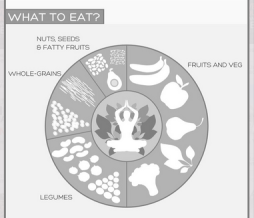
Going meatless doesn’t mean losing protein. Here is a list of 11 vegan foods with high protein content. And keep following my vegan food posts for recipe ideas!
- LENTILS (18G / CUP)
Green or red lentils are delicious and easily spiced up. I use red lentils to make vegan Bolognese which is delicious!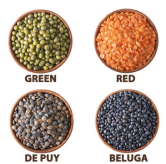
- LEGUMES (CHICKPEAS 15G / CUP)
My favorite are chickpeas, for making vegan hummus, cookie dough, or falafel, but other beans are also high in protein.
- TEMPEH (31 G / CUP)
Tempeh is fermented soy beans and looks similar to tofu. It’s great fried for sandwiches to substitute for meat and cheese or put in vegetarian curries instead of tofu.
- NUTS AND SEEDS (ALMONDS
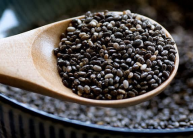 8G / CUP)
8G / CUP)
Almonds, pumpking seeds, chia seeds, hemp seeds, brazil nuts, cashews are excellent sources of protein and healthy fats that keep you feeling full for a long time.
- WHOLE-GRAINS (QUINOA 8G / CUP)
Quinoa is really delicious and easy to make. It pairs perfectly with vegetables to make for a complete meal sure to leave you satisfied.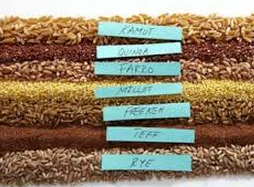
- BEEF / FISH SUBSTITUTE (13G / CUP)
 This was the best discovery so far. Vegan meat substitute is easy to find at Whole Foods or Trader Joes and is really delicious. My favorite brand is Beyond Meat (it’s soy and gluten free) and I make thai vegan lettuce wraps that taste exactly like the ones from PF changes with unshelled edamame for an extra protein punch!
This was the best discovery so far. Vegan meat substitute is easy to find at Whole Foods or Trader Joes and is really delicious. My favorite brand is Beyond Meat (it’s soy and gluten free) and I make thai vegan lettuce wraps that taste exactly like the ones from PF changes with unshelled edamame for an extra protein punch!
- VEGAN CHEESE (5G / CUP)
There are many vegan cheese options at the store including cheddar, ricotta, cream cheese, and almond milk cheese. I made almond cheese at home and it’s super easy. Find the recipe here for basic vegan almond cheese.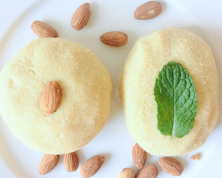
- VEGAN YOGURT (4G / CUP)
Vegan yogurt is easy to find and delicious. Top it with fruit or spread it on flat bread for a delicious breakfast or snack. 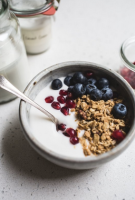
- PLANT MILK (5G / CUP)
There are lots of vegan milk options such as coconut, almond, hazelnut, cashew, flax, rice, and oat. 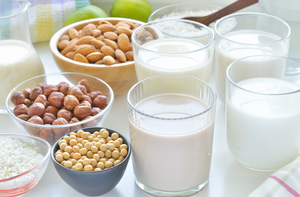
- PEAS (8G / CUP)
This was the most shocking item when I switched to a vegan diet. Peas are full of protein. The soy / gluten / meat free beef crumble that I love is made from primarily peas.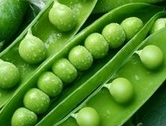
 SPINACH / BROCCOLI / AVOCADO (5G / CUP)
SPINACH / BROCCOLI / AVOCADO (5G / CUP)
Lots of dark leafy greens including kale, spinach, asparagus, sprouts, watercress, and broccoli and are excellent source of protein.
